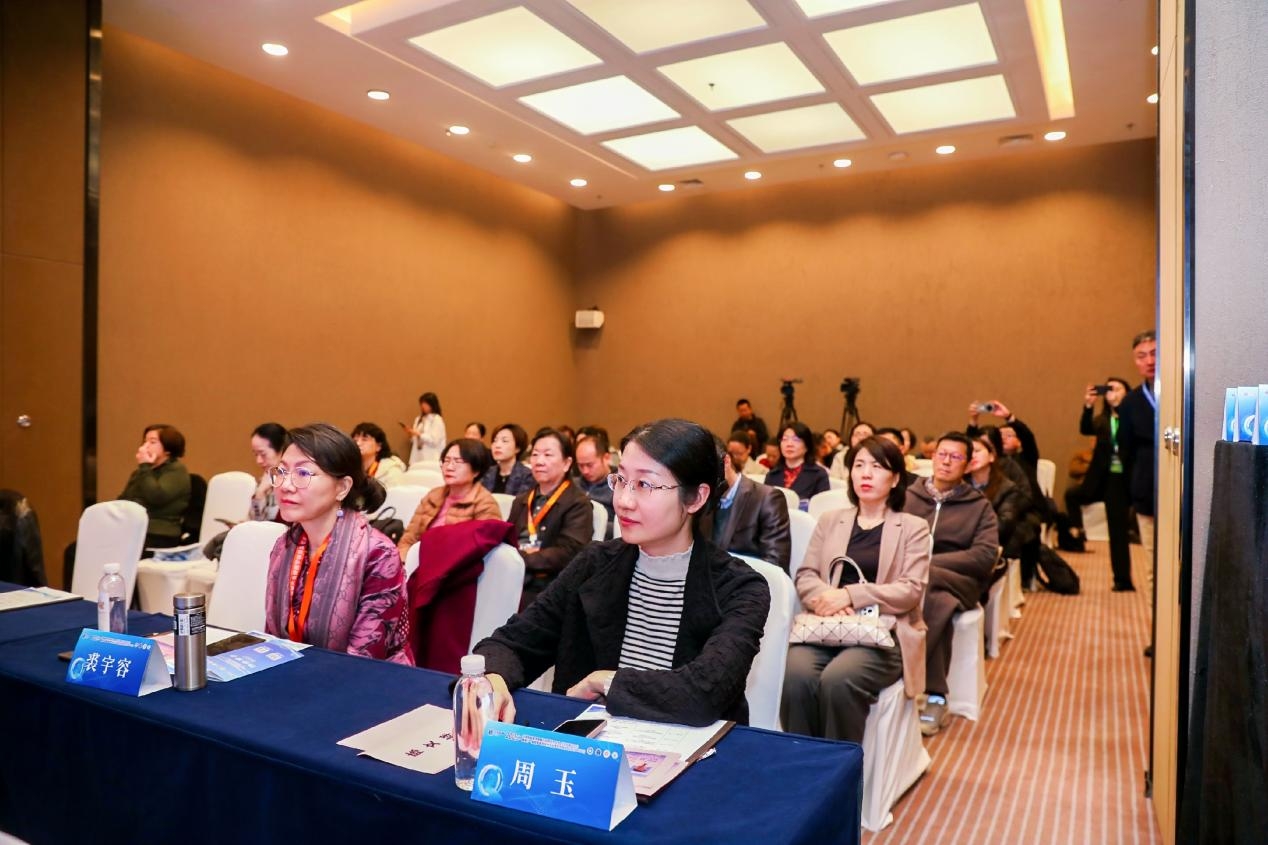The academic conference on "Chronic Disease Management and Prevention in the Elderly - Anti-aging, Cell Therapy and Health Management" was held in Chongqing
The academic conference on "Chronic Disease Management and Prevention in the Elderly - Anti-aging, Cell Therapy and Health Management", jointly organized by the Laboratory Medicine Branch of the Chinese Society of Geriatrics, the Laboratory Medicine Branch of the China Association of Medical Equipment, and the Laboratory Medicine Branch of the Chinese Society of Geriatric Health Care Medicine, was successfully held in Chongqing on the morning of March 15, 2025. This conference was chaired by Professor Cong Yulong, the honorary president of the Laboratory Medicine Branch of the Chinese Geriatrics Society, and co-chaired by Professor MAO Yuanli, the president of the Laboratory Medicine Branch of the Chinese Geriatrics Society, and the director of the Laboratory Medicine Professional Committee of the PLA. The conference brought together authoritative experts and scholars in the fields of geriatric disease prevention and treatment, clinical laboratory testing and health management, and cell therapy in China. Through academic reports and on-site discussions, and by adopting a dual-track online and offline interaction model, it has attracted the participation of many clinical and laboratory experts and scholars.
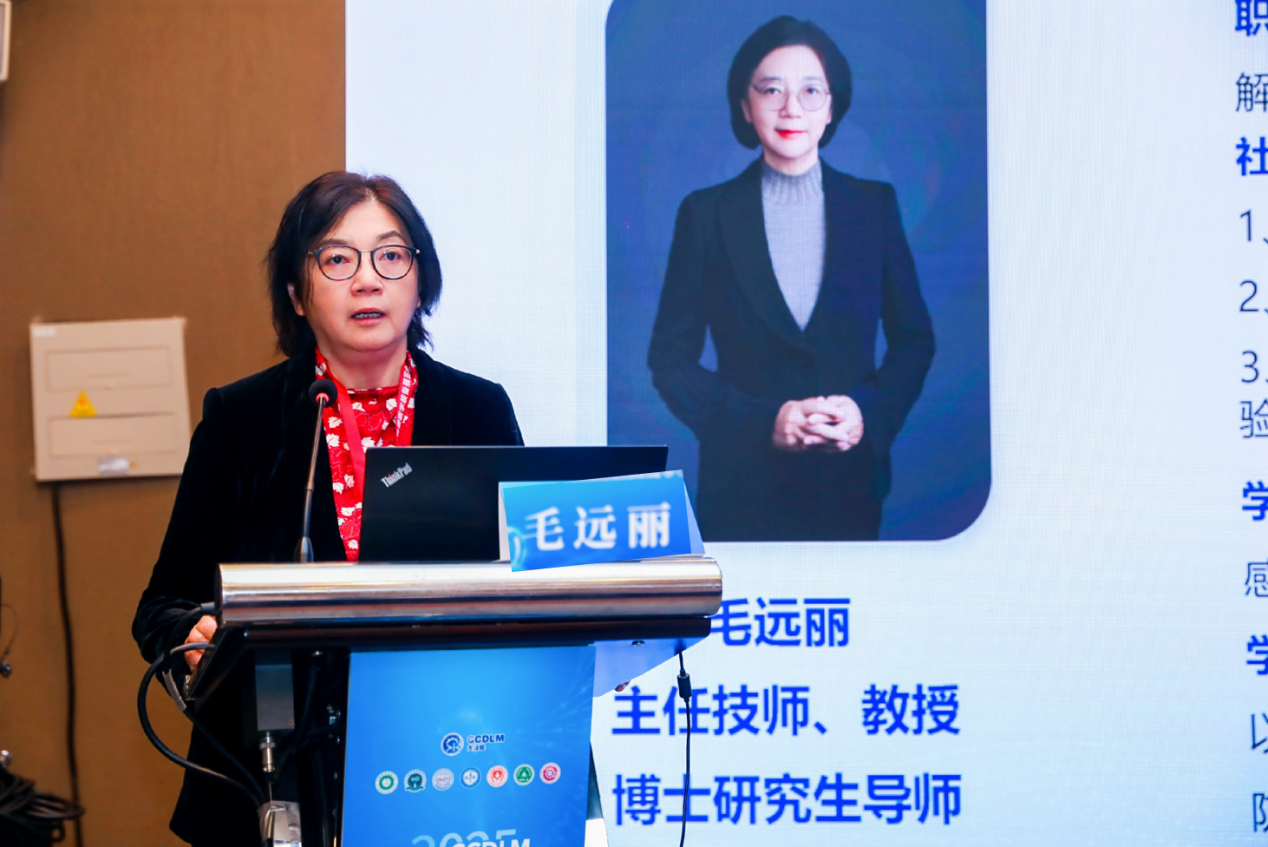 Professor MAO Yuanli delivered the opening remarks of this academic conference, pointing out that population aging is a global challenge. How to delay aging and improve the quality of life through scientific means, and move the national policy of healthy aging forward, has become a common focus of the medical community. Under the meticulous planning of Professor Cong Yulong, this conference focuses on the clinical application value of clinical laboratory biomarkers and cell therapy in anti-aging and health management in the elderly. It aims to jointly explore and exchange the latest research achievements and practical experiences, which is bound to inject new impetus into elderly health management.
Professor MAO Yuanli delivered the opening remarks of this academic conference, pointing out that population aging is a global challenge. How to delay aging and improve the quality of life through scientific means, and move the national policy of healthy aging forward, has become a common focus of the medical community. Under the meticulous planning of Professor Cong Yulong, this conference focuses on the clinical application value of clinical laboratory biomarkers and cell therapy in anti-aging and health management in the elderly. It aims to jointly explore and exchange the latest research achievements and practical experiences, which is bound to inject new impetus into elderly health management.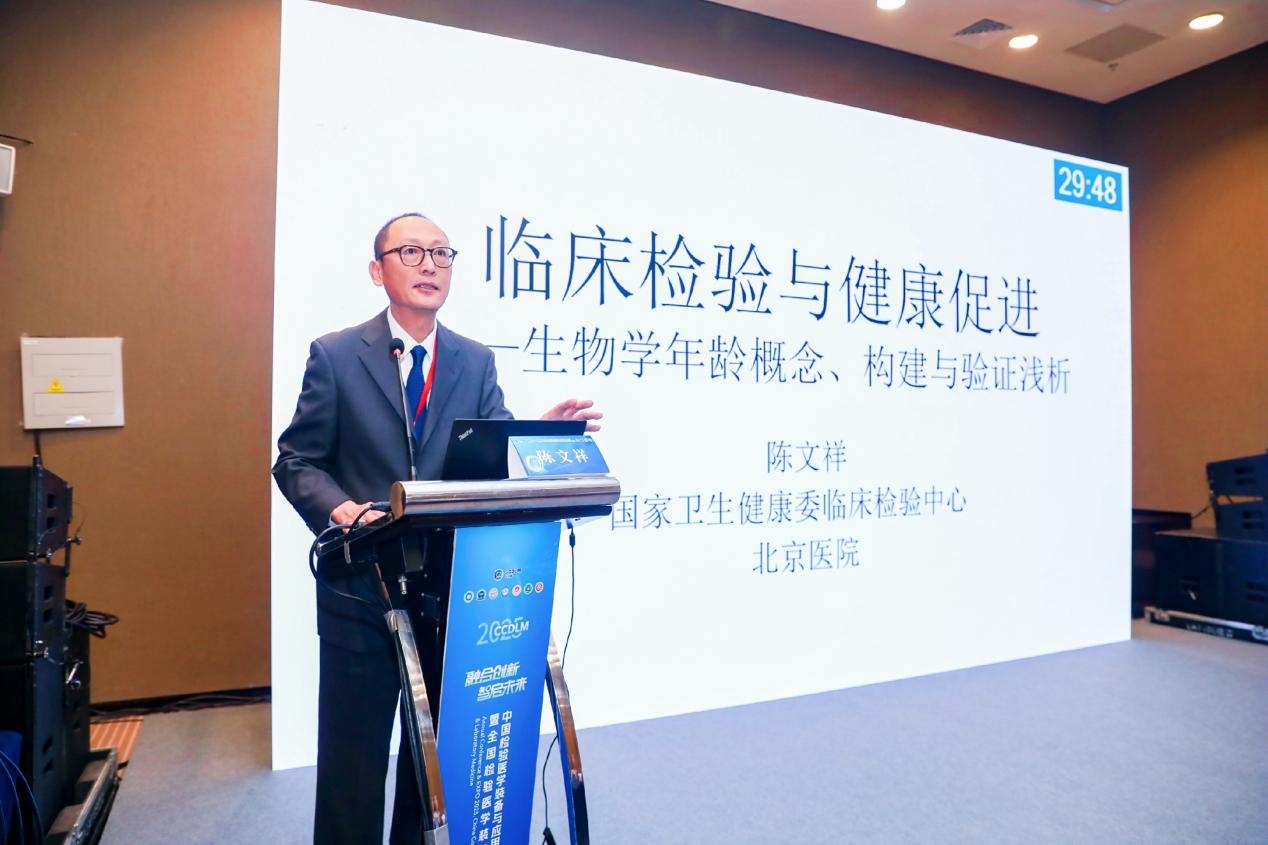 Professor Chen Wenxiang from the Clinical Laboratory Center of the National Health Commission shared a special report on "Clinical Laboratory Testing and Health Promotion". He pointed out that age is the most important risk factor for chronic diseases. Time-based aging is fixed, while biological aging varies. Identifying biological aging is an important step in the prevention of chronic diseases. The manifestations of many test items change with age. Some are accelerating factors of aging, and some are manifestations of aging. Their combination may reflect the overall aging situation. At present, a variety of biological age indicators have been proposed. The test items used include routine test items, epigenome, glycogi group, proteome, etc. Biological age shows a stronger ability to predict death or disease than time-based age. Clinical tests have always been an important means of disease diagnosis and will also play a significant role in health promotion.
Professor Chen Wenxiang from the Clinical Laboratory Center of the National Health Commission shared a special report on "Clinical Laboratory Testing and Health Promotion". He pointed out that age is the most important risk factor for chronic diseases. Time-based aging is fixed, while biological aging varies. Identifying biological aging is an important step in the prevention of chronic diseases. The manifestations of many test items change with age. Some are accelerating factors of aging, and some are manifestations of aging. Their combination may reflect the overall aging situation. At present, a variety of biological age indicators have been proposed. The test items used include routine test items, epigenome, glycogi group, proteome, etc. Biological age shows a stronger ability to predict death or disease than time-based age. Clinical tests have always been an important means of disease diagnosis and will also play a significant role in health promotion.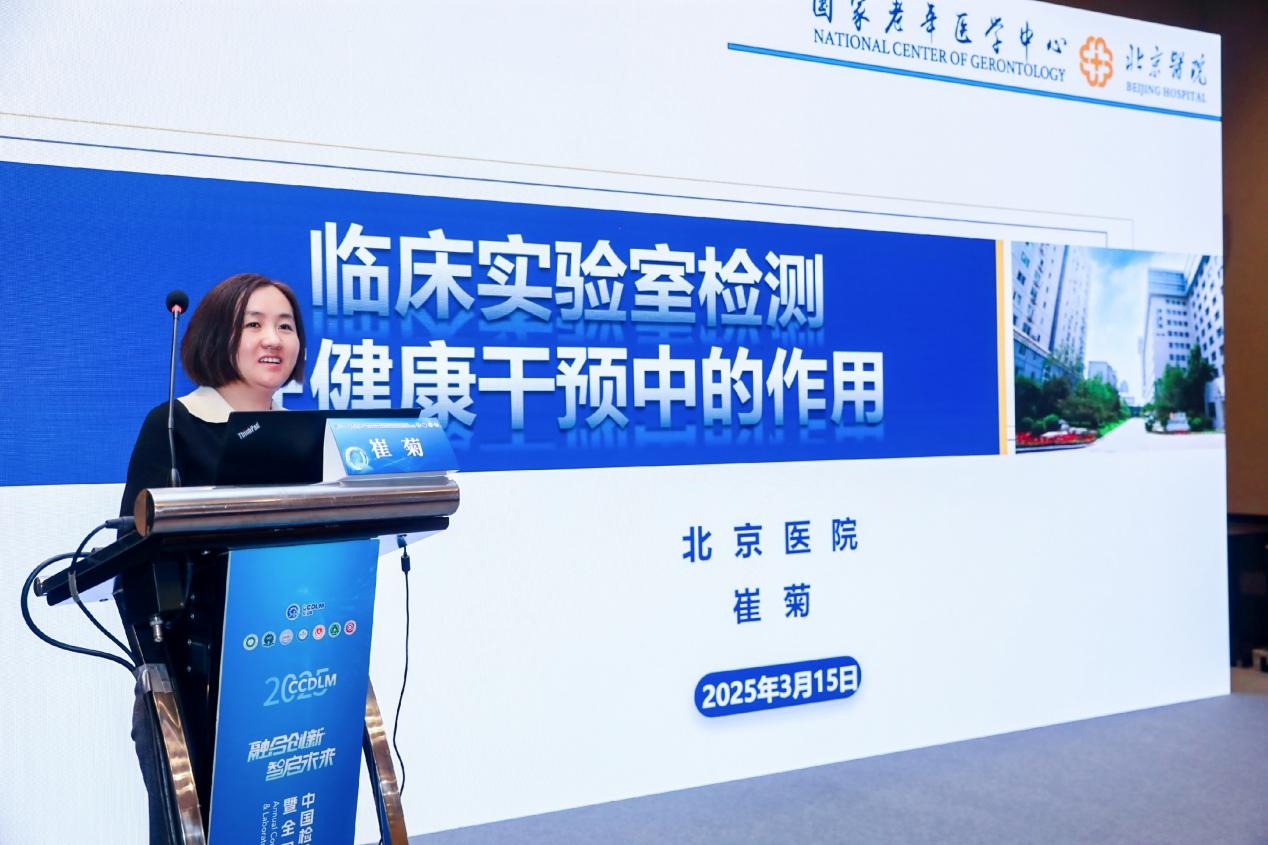 Professor Cui Ju from the National Geriatrics Center of Beijing Hospital shared a special report on "The Role of Clinical Laboratory Testing in Health Intervention". She proposed that laboratory testing is the scientific cornerstone of clinical diagnosis and treatment. Laboratory testing plays a crucial role in early disease screening and risk assessment, etiological analysis and precise diagnosis and treatment, disease course monitoring and therapeutic effect evaluation, prognosis assessment and dynamic tracking. The technological innovation and expansion of laboratory testing are reflected in various aspects such as hypersensitivity testing technology, POCT, multi-omics technology, artificial intelligence and big data. Meanwhile, technological innovation models such as long-term health intervention and promotion, construction of the health curve throughout the life cycle of adults, and expansion from clinical evidence-based to health big data are proposed to assist health management. Finally, the challenges and future research directions faced by clinical laboratory testing in health intervention are pointed out.
Professor Cui Ju from the National Geriatrics Center of Beijing Hospital shared a special report on "The Role of Clinical Laboratory Testing in Health Intervention". She proposed that laboratory testing is the scientific cornerstone of clinical diagnosis and treatment. Laboratory testing plays a crucial role in early disease screening and risk assessment, etiological analysis and precise diagnosis and treatment, disease course monitoring and therapeutic effect evaluation, prognosis assessment and dynamic tracking. The technological innovation and expansion of laboratory testing are reflected in various aspects such as hypersensitivity testing technology, POCT, multi-omics technology, artificial intelligence and big data. Meanwhile, technological innovation models such as long-term health intervention and promotion, construction of the health curve throughout the life cycle of adults, and expansion from clinical evidence-based to health big data are proposed to assist health management. Finally, the challenges and future research directions faced by clinical laboratory testing in health intervention are pointed out. Professor Zeng Ping from the National Geriatrics Center of Beijing Hospital gave a special report on "Screening of Biomarkers for Elderly Health Assessment and Thoughts on Their Clinical Application". She pointed out that comorbidities and geriatric syndromes are the main health issues of the elderly, and maintaining the functions of the elderly - physical activity ability and cognitive ability - is the basis for healthy aging. The detection of biomarkers during the pathophysiological change stage is the most important window period for early diagnosis and early treatment. Meanwhile, the current research status of biomarkers for elderly health-related diseases such as Alzheimer's disease, frailty and sarcopenia, as well as the clinical research strategies of biomarkers for elderly health evaluation, including from the discovery of biomarkers to the construction of multi-biomarker models and the application of AI technology, are introduced. Finally, it is pointed out that the development and research of biomarkers require scientific design and validation by the population.
Professor Zeng Ping from the National Geriatrics Center of Beijing Hospital gave a special report on "Screening of Biomarkers for Elderly Health Assessment and Thoughts on Their Clinical Application". She pointed out that comorbidities and geriatric syndromes are the main health issues of the elderly, and maintaining the functions of the elderly - physical activity ability and cognitive ability - is the basis for healthy aging. The detection of biomarkers during the pathophysiological change stage is the most important window period for early diagnosis and early treatment. Meanwhile, the current research status of biomarkers for elderly health-related diseases such as Alzheimer's disease, frailty and sarcopenia, as well as the clinical research strategies of biomarkers for elderly health evaluation, including from the discovery of biomarkers to the construction of multi-biomarker models and the application of AI technology, are introduced. Finally, it is pointed out that the development and research of biomarkers require scientific design and validation by the population.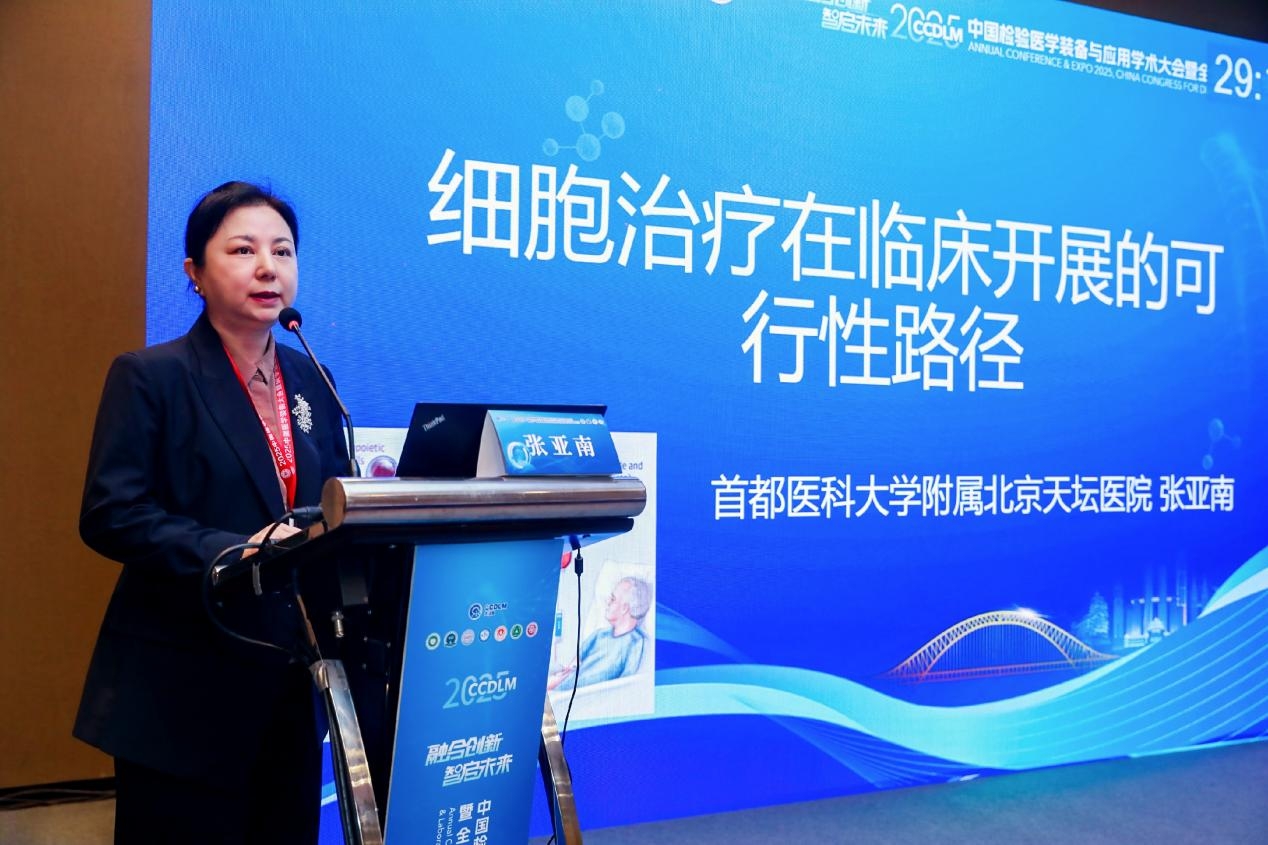 Professor Zhang Yanan from Beijing Tiantan Hospital, Capital Medical University, delivered a report on "Feasible Pathways for the Clinical Application of Cell Therapy". She pointed out that aging is the functional decline of an organism during adulthood, and one of the main biological characteristics of the aging process includes stem cell depletion and cellular senescence. In the clinical trials/research projects of stem cell therapy for diseases at Tiantan Hospital and the treatment practices carried out, a mature workflow for clinical stem cell therapy has been formed. The report introduces the current research status of stem cell anti-aging, the filing and supervision of clinical research, the research and clinical practice of cell therapy, as well as the feasible clinical practicality of stem cell anti-aging in the future.
Professor Zhang Yanan from Beijing Tiantan Hospital, Capital Medical University, delivered a report on "Feasible Pathways for the Clinical Application of Cell Therapy". She pointed out that aging is the functional decline of an organism during adulthood, and one of the main biological characteristics of the aging process includes stem cell depletion and cellular senescence. In the clinical trials/research projects of stem cell therapy for diseases at Tiantan Hospital and the treatment practices carried out, a mature workflow for clinical stem cell therapy has been formed. The report introduces the current research status of stem cell anti-aging, the filing and supervision of clinical research, the research and clinical practice of cell therapy, as well as the feasible clinical practicality of stem cell anti-aging in the future.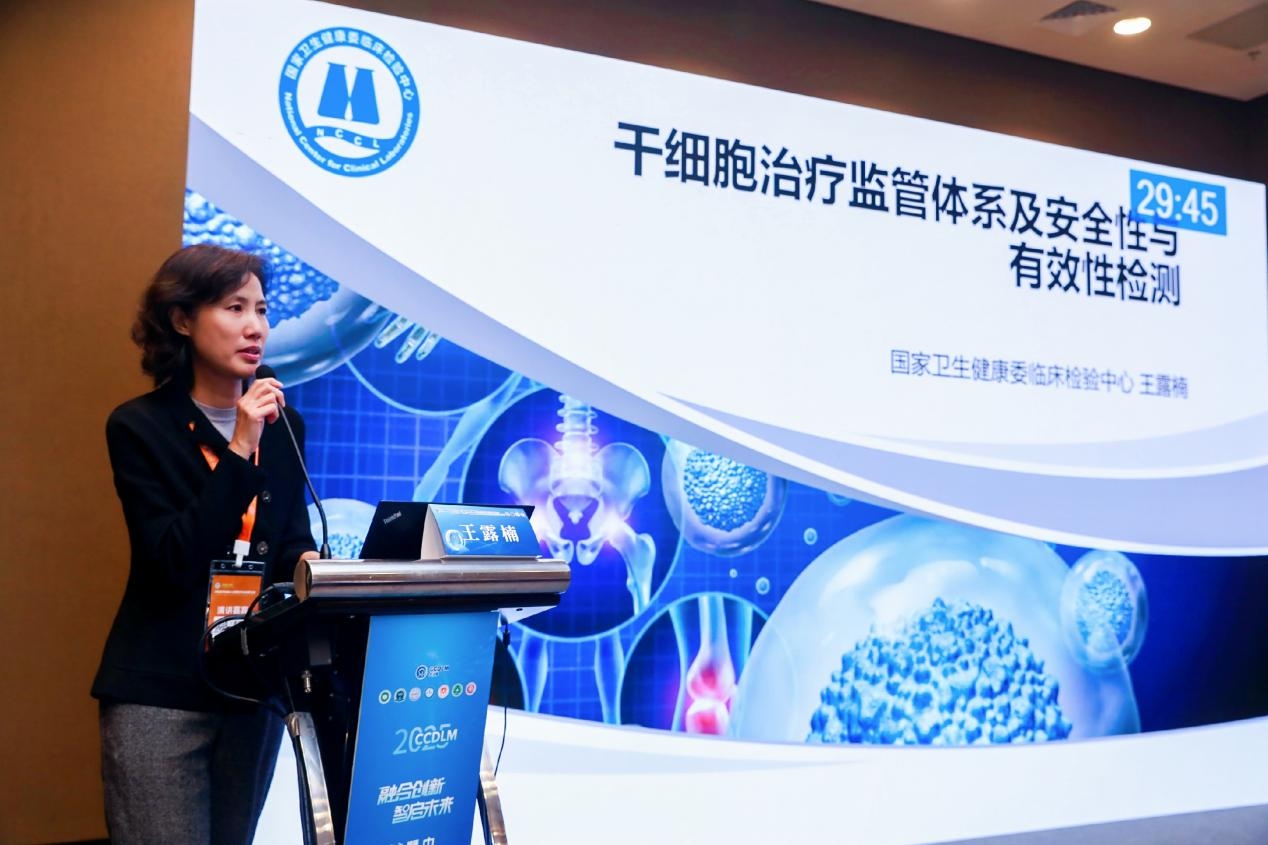 Professor Wang Lunan from the Clinical Laboratory Center of the National Health Commission gave an introduction on "The Regulatory System of Stem Cell Therapy and the Monitoring of Safety and Effectiveness". She first elaborated on the definition, principles and characteristics of stem cell therapy, as well as the current development status and quality overview of the stem cell therapy industry. Next, the regulatory system for stem cell therapy and the safety tests in aspects such as donor screening, biological safety, microbial safety, and residue and physicochemical testing were reported. Finally, the research progress on how to conduct the detection of the effectiveness of stem cell therapy and the verification of clinical efficacy is proposed.
Professor Wang Lunan from the Clinical Laboratory Center of the National Health Commission gave an introduction on "The Regulatory System of Stem Cell Therapy and the Monitoring of Safety and Effectiveness". She first elaborated on the definition, principles and characteristics of stem cell therapy, as well as the current development status and quality overview of the stem cell therapy industry. Next, the regulatory system for stem cell therapy and the safety tests in aspects such as donor screening, biological safety, microbial safety, and residue and physicochemical testing were reported. Finally, the research progress on how to conduct the detection of the effectiveness of stem cell therapy and the verification of clinical efficacy is proposed.

 This academic conference was co-chaired by Professor Zhou Yu from the Second Medical Center of the PLA General Hospital, Professor Zhao Hu from Huadong Hospital of Shanghai, Professor Luo Yang from Chongqing People's Hospital, Professor Qiu Yurong from Nanfang Hospital of Southern Medical University, and Professor Huang Zhihu from the Ethnic Hospital of Guangxi Zhuang Autonomous Region.
This academic conference was co-chaired by Professor Zhou Yu from the Second Medical Center of the PLA General Hospital, Professor Zhao Hu from Huadong Hospital of Shanghai, Professor Luo Yang from Chongqing People's Hospital, Professor Qiu Yurong from Nanfang Hospital of Southern Medical University, and Professor Huang Zhihu from the Ethnic Hospital of Guangxi Zhuang Autonomous Region.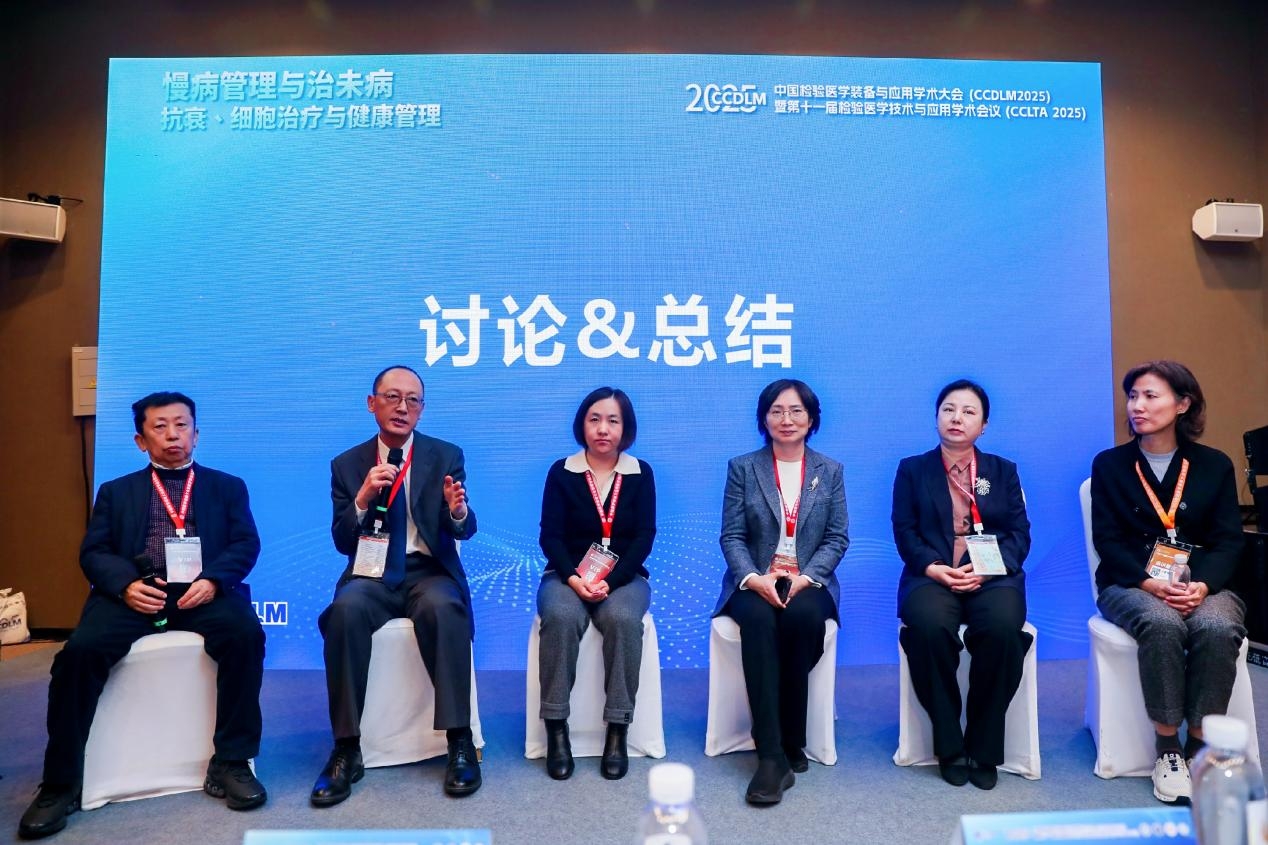 The discussion session of this meeting was presided over by the chairperson of the Military Laboratory Medicine Professional Committee, with experts such as Professor Chen Wenxiang, Professor Cui Ju, Professor Zeng Ping, Professor Zhang Yanan, and Professor Wang Lunan participating in the discussion. Experts and scholars engaged in a lively discussion on the application value of clinical testing in the early warning, precise diagnosis and prognosis judgment of diseases, the current research status of cell therapy and its potential value in anti-aging in the future, as well as how testing can contribute to healthy aging. In addition, experts also had in-depth exchanges on what kind of lifestyle can slow down aging, how to discover new biomarkers related to geriatric diseases and verify their clinical application value, how to evaluate the safety and effectiveness of stem cell therapy, and how to promote the application prospects and significance of cell therapy. During the summary stage of the conference, the host highly praised the wonderful reports of this conference. The content of this conference covered various aspects from the laboratory to the clinical field, from the research and development of anti-aging markers to clinical application, as well as the research, transformation and regulation of cell therapy. The academic insights of the experts were exchanged ideas and collided with wisdom. It provided the participants with a profound and inspiring academic feast.
The discussion session of this meeting was presided over by the chairperson of the Military Laboratory Medicine Professional Committee, with experts such as Professor Chen Wenxiang, Professor Cui Ju, Professor Zeng Ping, Professor Zhang Yanan, and Professor Wang Lunan participating in the discussion. Experts and scholars engaged in a lively discussion on the application value of clinical testing in the early warning, precise diagnosis and prognosis judgment of diseases, the current research status of cell therapy and its potential value in anti-aging in the future, as well as how testing can contribute to healthy aging. In addition, experts also had in-depth exchanges on what kind of lifestyle can slow down aging, how to discover new biomarkers related to geriatric diseases and verify their clinical application value, how to evaluate the safety and effectiveness of stem cell therapy, and how to promote the application prospects and significance of cell therapy. During the summary stage of the conference, the host highly praised the wonderful reports of this conference. The content of this conference covered various aspects from the laboratory to the clinical field, from the research and development of anti-aging markers to clinical application, as well as the research, transformation and regulation of cell therapy. The academic insights of the experts were exchanged ideas and collided with wisdom. It provided the participants with a profound and inspiring academic feast.
This academic conference explored the path of precise health management driven by laboratory technology, providing an important new model for promoting the development of geriatric laboratory medicine. It highlighted the new concept and thinking of geriatric laboratory medicine moving forward from disease laboratory testing technology to health intervention strategy, and offered new solutions for achieving healthy aging in China.